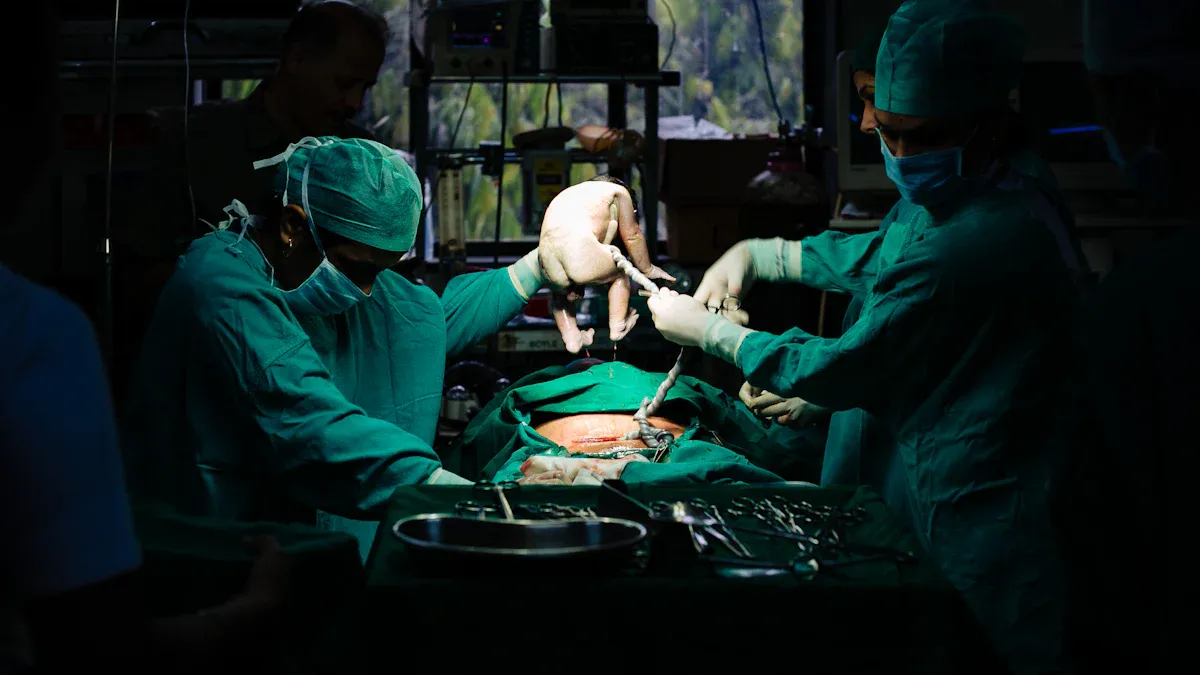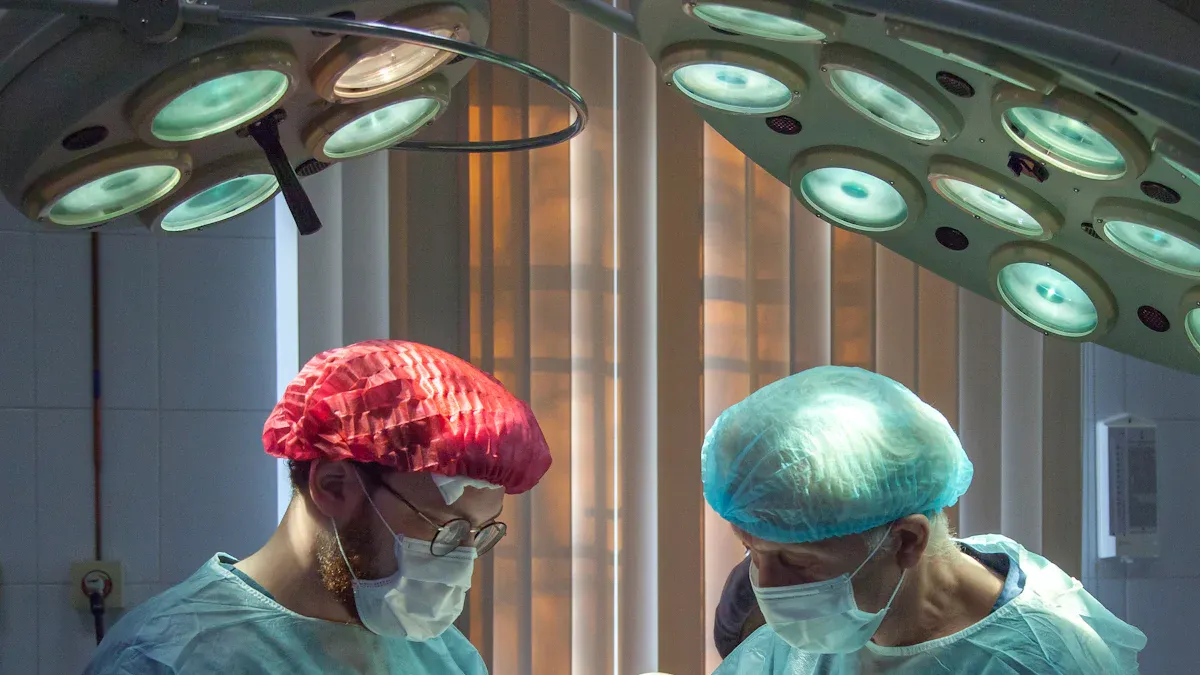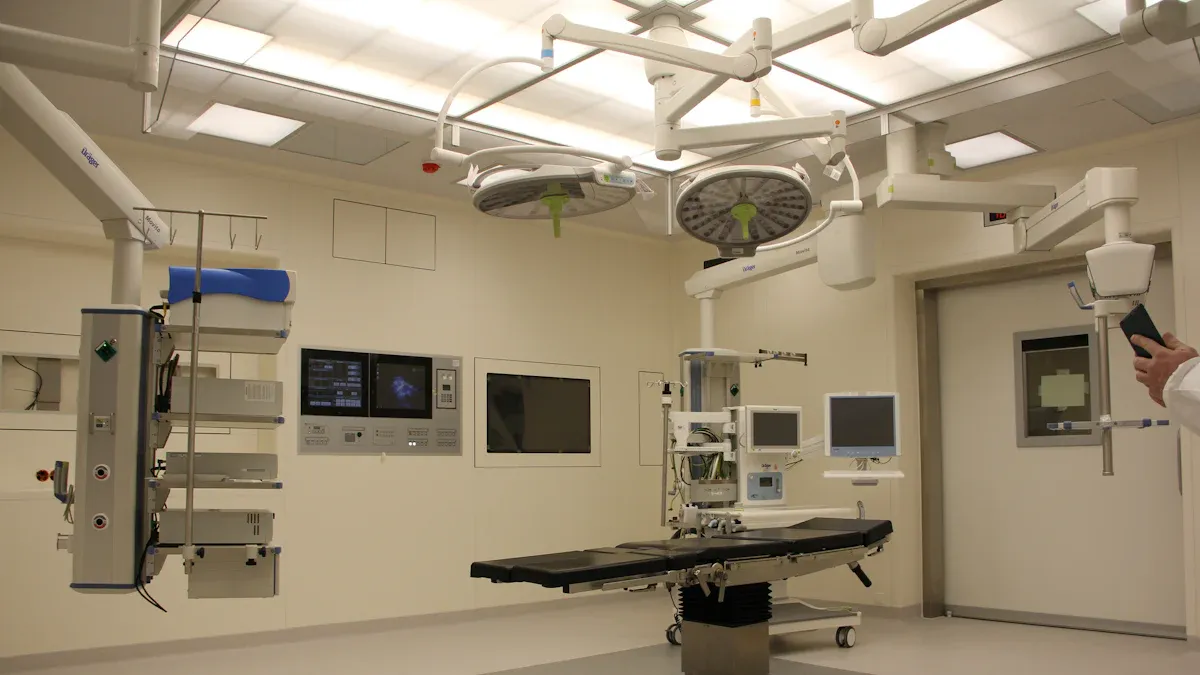How Nitinol Guidewires Are Used in Modern Catheter Ablation Techniques

Nitinol Guidewire for Electrophysiology Applications plays a critical role in catheter ablation techniques, particularly in electrophysiology studies. Their unique properties, such as flexibility and shape memory, allow them to navigate the intricate pathways of the heart with ease. These wires enhance precision by enabling accurate placement of catheters within complex cardiac structures.
Their effectiveness is evident in clinical results:
The Silverway guidewire achieved a 98% success rate in vessel crossing.
Catheters were successfully delivered in 92% of cases.
No significant complications were reported following their use.
By ensuring safety and reliability, Nitinol Guidewire for Electrophysiology Applications has transformed modern electrophysiology procedures.
Key Takeaways
Nitinol guidewires help doctors move through heart pathways easily.
They are flexible and can return to their original shape.
These guidewires lower the chance of hurting blood vessels.
This makes procedures safer and reduces possible problems.
Using nitinol guidewires makes procedures faster and more efficient.
Patients heal quicker and have fewer problems after the procedure.
These guidewires improve success in fixing irregular heartbeats.
Doctors feel more confident about the results of the treatment.
Properties of Nitinol Guidewires for Electrophysiology Applications

Superelasticity and Shape Memory
Nitinol's superelasticity and shape memory make it an ideal material for guidewires used in electrophysiology applications. These properties allow the guidewire to bend and flex as it navigates the intricate pathways of the heart. Once the external force is removed, the guidewire returns to its original shape, ensuring consistent performance throughout the procedure. This ability to recover its form is crucial when accessing challenging anatomical regions, such as the left atrium or pulmonary veins, during catheter ablation.
Manufacturers have optimized nitinol guidewire technology to meet the demands of modern electrophysiology. These guidewires exhibit exceptional flexibility, enabling them to traverse complex vessel paths with ease. Advancements in coatings, such as hydrophilic layers, further enhance their performance by reducing friction and improving lubricity. This ensures smoother navigation through tortuous anatomy, minimizing the risk of vessel trauma.
Tip: AccuPath's nitinol tubing is engineered to deliver superior superelasticity and shape memory, making it a reliable choice for electrophysiology procedures.
Biocompatibility and Corrosion Resistance
Biocompatibility is a critical factor in medical devices, and nitinol excels in this area. Its unique composition, primarily a blend of nickel and titanium, minimizes the risk of adverse reactions when in contact with human tissue. This makes nitinol guidewires safe for prolonged use during electrophysiology studies.
In addition to biocompatibility, nitinol offers excellent corrosion resistance. The material forms a protective oxide layer that shields it from degradation, even in the presence of bodily fluids. This resistance ensures that the guidewire maintains its structural integrity and functionality throughout the procedure. By combining biocompatibility with corrosion resistance, nitinol guidewires provide a safe and durable solution for navigating the heart's complex anatomy.
Durability in High-Stress Environments
Electrophysiology procedures often subject guidewires to significant mechanical stress. Nitinol's durability ensures that it can withstand these demanding conditions without compromising performance. The material's ability to endure repeated bending and twisting makes it particularly suited for procedures requiring precise catheter placement.
Recent innovations in nitinol guidewire technology have further enhanced their durability. These guidewires are designed to maintain their mechanical properties even after extended use, reducing the likelihood of device failure. This reliability is essential for achieving successful outcomes in catheter ablation procedures.
Note: The durability of AccuPath's nitinol tubing ensures consistent performance, even in the most challenging electrophysiology applications.
Applications of Nitinol Guidewires in Electrophysiology Studies
Facilitating Transseptal Puncture
Nitinol guidewires play a vital role in transseptal puncture, a critical step in many electrophysiology procedures. This technique involves crossing the atrial septum to access the left atrium. The superelasticity of nitinol allows the guidewire to bend and flex without losing its shape, making it ideal for navigating the septal wall. Its biocompatibility ensures safe interaction with cardiac tissue, reducing the risk of complications.
Modern guidewire technology enhances this process by providing exceptional control and stability. Physicians can rely on the guidewire's precision to position the catheter accurately, even in challenging anatomical conditions. This precision minimizes procedural risks and improves the overall success rate of transseptal punctures.
Supporting Left Atrial Catheterization
Accessing the left atrium is essential for many ablation procedures. Nitinol guidewires simplify this process by offering unmatched flexibility and durability. These properties enable the guidewire to traverse the septum and support catheter placement with minimal resistance.
Clinical data highlights the effectiveness of nitinol guidewires in left atrial catheterization. In a study involving seven patients, five required only one attempt to cross the septum, while two required two attempts. Notably, no complications were reported during these procedures:
Patient Count | Attempts to Cross Septum | Complications |
|---|---|---|
7 | 1 (5 patients), 2 (2 patients) | 0 |
This data underscores the reliability of nitinol guidewires in achieving safe and efficient left atrial access.
Enhancing Navigation in Complex Cardiac Structures
The intricate anatomy of the heart presents significant challenges during electrophysiology studies. Nitinol guidewires address these challenges by offering superior navigation capabilities. Their superelasticity allows them to adapt to the heart's complex pathways, while their corrosion resistance ensures consistent performance throughout the procedure.
These guidewires excel in navigating tortuous vessels and reaching hard-to-access areas, such as the pulmonary veins. By reducing friction and maintaining structural integrity, they enable precise catheter placement. This precision is crucial for targeting abnormal tissue during ablation, ultimately improving procedural outcomes.
Advantages of Nitinol Guidewires in Catheter Ablation Techniques

Reduced Risk of Vessel Trauma
Nitinol guidewires minimize vessel trauma during catheter ablation procedures. Their superelasticity allows them to bend and flex without exerting excessive pressure on vessel walls. This flexibility reduces the likelihood of damage to delicate cardiac structures, ensuring safer navigation through complex pathways. The smooth surface of nitinol, often enhanced with hydrophilic coatings, further decreases friction during insertion and movement. This feature contributes to a gentler interaction with blood vessels, lowering the risk of complications such as perforation or bleeding.
AccuPath's nitinol tubing exemplifies this advantage by offering superior elasticity and surface optimization. Physicians rely on these guidewires to perform procedures with greater confidence, knowing that patient safety is prioritized.
Tip: Using nitinol guidewire technology can significantly reduce vessel trauma, making it an essential tool for modern electrophysiology practices.
Improved Precision in Targeting Abnormal Tissue
Precision is critical in catheter ablation techniques, where the goal is to target and eliminate abnormal cardiac tissue responsible for arrhythmias. Nitinol guidewires enhance procedural accuracy by providing exceptional control and stability. Their shape memory property ensures consistent performance, allowing physicians to position catheters with pinpoint accuracy. This precision is particularly valuable when navigating challenging areas such as the pulmonary veins or left atrium.
The advanced design of nitinol guidewire technology supports precise mapping and ablation. By maintaining structural integrity and reducing unintended movements, these guidewires help physicians focus on the targeted tissue without distractions. AccuPath's nitinol tubing stands out in this regard, offering unmatched reliability for achieving optimal outcomes in electrophysiology procedures.
Increased Efficiency in Mapping and Ablation
Efficiency plays a vital role in the success of catheter ablation procedures. Nitinol guidewires streamline the process by enabling faster and smoother navigation through cardiac anatomy. Their durability ensures consistent performance, even during prolonged procedures, reducing the need for frequent adjustments or replacements. This reliability saves time and enhances procedural workflow.
The hydrophilic coatings on nitinol guidewires further improve efficiency by minimizing resistance during movement. Physicians can map and ablate abnormal tissue with greater speed and accuracy, leading to shorter procedure times. Clinical studies have demonstrated that nitinol guidewires contribute to higher success rates and reduced complications, making them indispensable in modern electrophysiology practices.
AccuPath's nitinol tubing exemplifies these benefits, offering a combination of durability, flexibility, and precision that supports efficient mapping and ablation. By integrating these guidewires into their procedures, physicians can achieve better outcomes for their patients.
Impact of Nitinol Guidewires on Procedural Success and Patient Outcomes
Shortened Procedure Times
Nitinol guidewires significantly reduce procedure times in electrophysiology studies. Their superelasticity and shape memory properties allow physicians to navigate complex cardiac anatomy quickly and efficiently. These features minimize the time spent repositioning or adjusting the guidewire during catheter ablation procedures.
Statistical comparisons highlight the impact of nitinol guidewires on procedural efficiency:
Univariate comparisons using chi-squared tests for categorical variables demonstrate faster completion times.
Student’s t-tests for continuous variables confirm reduced procedure durations.
A two-tailed p-value of 0.05 or less indicates statistical significance in these findings.
By streamlining navigation and reducing delays, nitinol guidewires enhance the overall workflow of electrophysiology procedures.
Increased Success Rates in Treating Arrhythmias
The precision and reliability of nitinol guidewires contribute to higher success rates in treating arrhythmias. Their ability to maintain structural integrity under stress ensures accurate catheter placement, which is critical for targeting abnormal cardiac tissue. Physicians can rely on these guidewires to perform ablation with greater confidence, leading to improved outcomes.
Clinical studies consistently report higher success rates when nitinol guidewires are used. Their advanced design supports precise mapping and ablation, reducing the likelihood of incomplete treatments. This reliability makes them an essential tool in modern electrophysiology practices.
Reduced Recovery Times and Complications
Patients benefit from shorter recovery times and fewer complications when nitinol guidewires are utilized. These guidewires enable minimally invasive procedures, which result in reduced scarring and quicker healing. Their biocompatibility minimizes the risk of adverse reactions, further enhancing patient safety.
The trend toward minimally invasive surgeries continues to grow, driven by the advantages of nitinol devices. Patients experience better outcomes, including lower complication rates and faster returns to normal activities. This makes nitinol guidewires a cornerstone of patient-centered care in electrophysiology.
Nitinol guidewires have revolutionized electrophysiology practices with their unique properties. Their superelasticity and shape memory enable precise navigation through complex cardiac anatomy, while their biocompatibility ensures safe interaction with tissue. These guidewires improve procedural efficiency by reducing vessel trauma and enhancing catheter placement accuracy. Patients benefit from shorter recovery times and fewer complications, making nitinol a cornerstone of modern catheter ablation techniques.
Electrophysiology continues to advance due to innovations in nitinol technology. Physicians rely on these guidewires to achieve better outcomes, demonstrating their importance in treating arrhythmias and improving patient care.
FAQ
What are nitinol guidewires used for in catheter-based coronary procedures?
Nitinol guidewires assist in navigating complex cardiac anatomy during catheter-based coronary procedures. Their superelasticity and shape memory properties allow precise catheter placement, enhancing procedural success and patient outcomes.
How do interventional cardiologists benefit from using nitinol guidewires?
Interventional cardiologists benefit from nitinol guidewires due to their flexibility and durability. These features enable efficient navigation through intricate cardiac structures, reducing procedure times and improving the accuracy of catheter placement.
Are nitinol guidewires safe for patients?
Yes, nitinol guidewires are safe for patients. Their biocompatibility minimizes adverse reactions, and their corrosion resistance ensures structural integrity during procedures. These properties contribute to reduced recovery times and fewer complications.
How do nitinol guidewires improve procedural efficiency?
Nitinol guidewires improve procedural efficiency by allowing faster navigation through cardiac anatomy. Their durability reduces the need for frequent adjustments, while hydrophilic coatings minimize resistance, enabling quicker mapping and ablation.
What makes nitinol guidewires ideal for electrophysiology studies?
Nitinol guidewires are ideal for electrophysiology studies due to their superelasticity and shape memory. These properties facilitate precise catheter placement in complex cardiac structures, enhancing the success rates of arrhythmia treatments.
See Also
The Importance of Nitinol Tubing in Minimally Invasive Surgery
Nitinol Tubing's Impact on the Future of Medical Technology
Nitinol Tubing: Transforming the Landscape of Medical Devices
Nitinol Tubing's Critical Role in Modern Medical Applications

